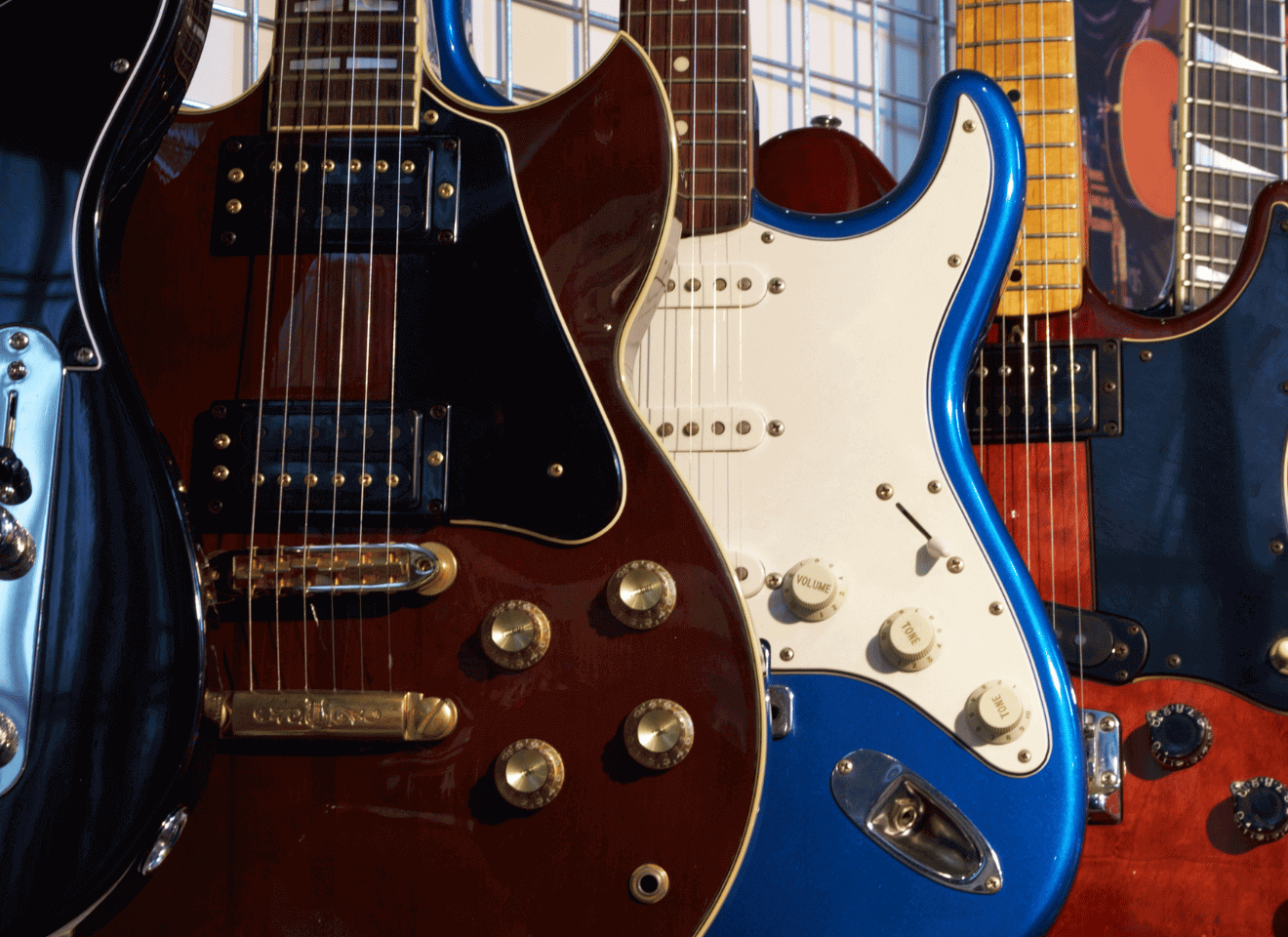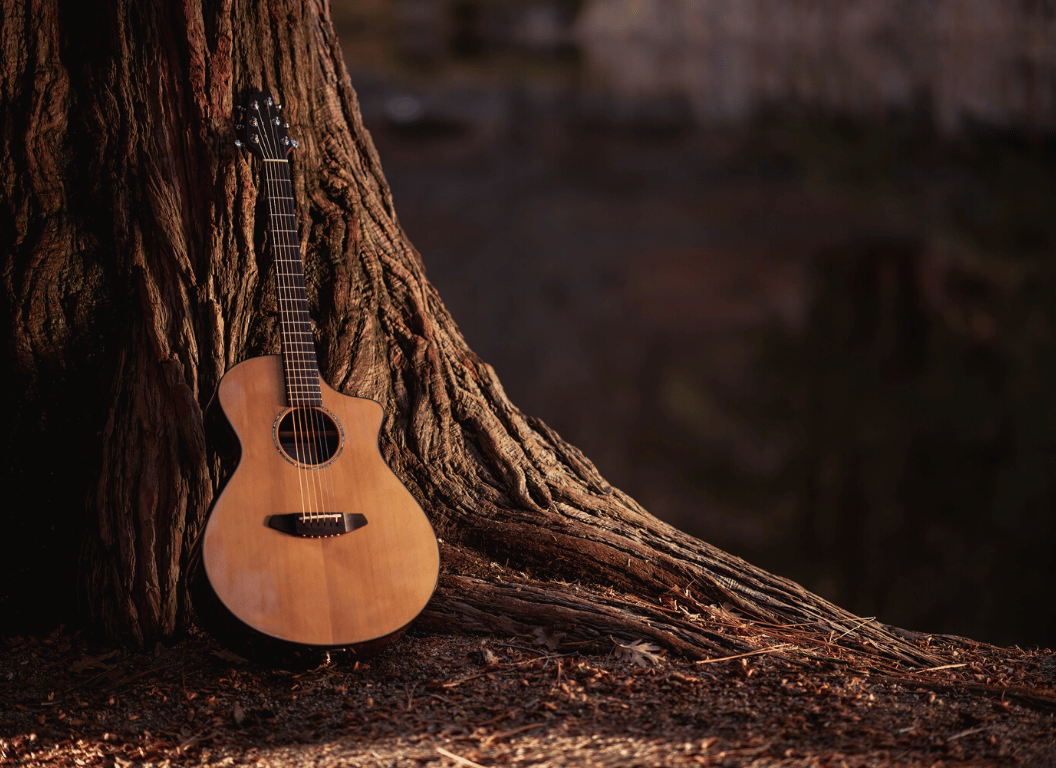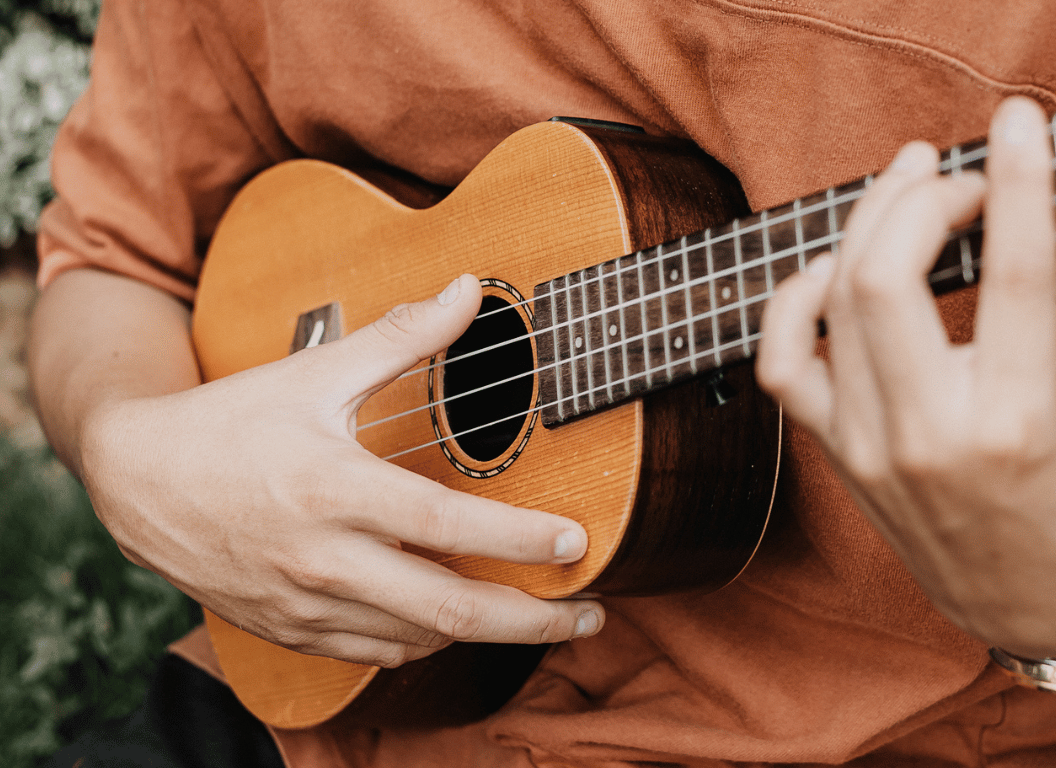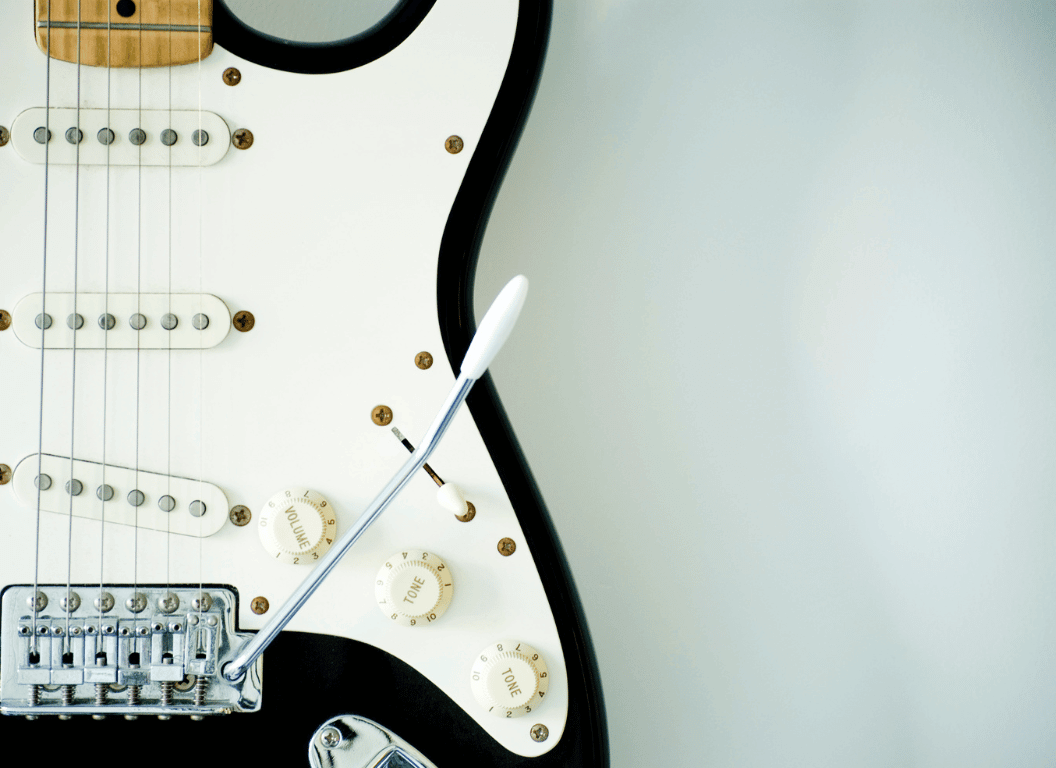Classical music and the electric guitar may seem like parallel phenomena, residing at vastly different ends of the music spectrum.
Nonetheless, merging these two distinct worlds can result in an exciting exploration of sonic possibilities.
There is a commonly perceived notion that the realm of classical music is accessible only through traditional instruments such as the violin, piano, or the classical guitar.
However, the versatility and range of the electric guitar can certainly challenge this presumption.
This article aims to delve into the transformative journey of how one can indeed master the nuances of classical music on this iconic, modern instrument.
We will attempt to elucidate the techniques, challenges, and the creative opportunities this amalgamation presents.
Table of Contents
- Can You Learn To Play Classical Music On An Electric Guitar?
- What Makes Classical Music Different From Other Genres?
- What Kind of Electric Guitar is Best for Classical Music?
- Adapting Classical Techniques for Electric Guitar
- Nylon Strings vs. Steel Strings for Playing Classical Music
- Tips to Improve Finger Picking Technique on Electric Guitar
- The Importance of Proper Guitar Setup
- Challenges You May Face When Playing Classical Music
- Classical Music Pieces You Can Start With
- How Long Will It Take to Learn Classical Music on Electric Guitar?
- The Bottom Line
Can You Learn To Play Classical Music On An Electric Guitar?
Yes, it is possible to learn to play classical music on an electric guitar. Although traditionally performed on an acoustic classical guitar, the technique and notation for classical music can be adapted to the electric guitar. However, it may not produce the distinctive timbre and resonance generally associated with classical music played on a traditional classical guitar.
Delving deeper into this topic, it is pertinent to explore the nuances of classical guitar techniques and how they translate to an electric guitar.
Alongside this, we will be addressing the role of electric guitar amplification and effects, as well as the potential for innovation in classical music through electric guitar use.
As we navigate through these interconnected themes, this discussion will provide stimulating insights for both novice and seasoned guitarists alike.
What Makes Classical Music Different From Other Genres?
Classical music is renowned for its distinctiveness and lasting impact on the music industry.
Unlike modern genres like pop or rock, classical music primarily focuses on the formal aspect of musical composition.
One of the defining characteristics of classical music is its complexity.
Each classical composition is highly structured and composed of different movements.
– Formality and Structure
In classical music, each piece follows a specific musical form.
This structured format often includes features such as sonata form, theme and variations, rondo form, or fugue.
Furthermore, classical music relies on a strict adherence to notation.
Every note, timing, dynamic, and articulation is specified, leaving little room for improvisation compared to other genres.
This adherence to notation and structured format enhances the consistency and predictability of classical music.
Every note, timing, dynamic, and articulation is specified, leaving little room for improvisation compared to other genres.
This attention to detail allows the listener to fully appreciate the skill and mastery of the composer and/or performer.
The formal nature of classical music extends to the performance setting, maintaining a serious and often solemn environment.
– Complexity and Storytelling
The second characteristic that truly sets classical music apart is its musical complexity.
It involves multiple melodies and counter-melodies interweaving to create a remarkable sonic texture.
This musical intricacy allows for dramatic tension and release in the music, often relating to a narrative or emotional expression.
This video delves deeper into the intricacies of this timeless genre.
It offers more examples on how classical music creates narratives through its melodies and structures.
Classical music is not only complex in its structure, but it also conveys the ability to tell a story.
The narrative element of classical music conveys emotion through developing melodies and dynamic contrasts that expand and contract in intensity.
Unlike other genres that often use lyrics to tell a story, classical music relies on the ‘language of music’ to express and evoke emotions.
– The Legacy of Classical Music
Finally, the lasting impact of classical music on the music industry sets it apart from other genres.
Over the centuries, classical music has laid foundational theoretical principles and compositional techniques that continue to influence contemporary music.
Many innovations like harmonic progression, contrapuntal texture, and the usage of various musical timbres can be attributed to classical music.
Over the centuries, classical music has laid foundational theoretical principles and compositional techniques that continue to influence contemporary music.
Its longevity is evident in its ability to evolve over different eras – from Baroque to Classical, Romantic, and beyond.
In each stage, it expanded in scope and expression while retaining its foundational elements.
Even today, classical music continues to inspire musicians from all genres, solidifying its unique position in the musical spectrum.
What Kind of Electric Guitar is Best for Classical Music?
When discussing classical music and its representation in the world of electric guitars, we first need to understand the unique demands this genre places on the instrument.
– Wood Type And Quality
A crucial factor affecting the sound of an electric guitar is the type and quality of the wood used in its construction.
Honduras Mahogany has a warm, balanced tone and good sustain, making it an excellent choice for playing classical music.
Alder is another popular choice, as it produces clear, full-bodied tones with rich mids and fat lows, and is perfect for classical guitar arrangements with fuller and more complex sound.
Alder is another popular choice, as it produces clear, full-bodied tones with rich mids and fat lows, and is perfect for classical guitar arrangements with fuller and more complex sound.
A guitar made from carefully selected, top-quality wood can significantly enhance the resonance of the sound and contribute to the overall impression of the music you play.
– Pickups
The pickups installed on your guitar will also play a vital role in defining its tone and responsiveness.
Necessary for amplification, pickups translate the vibrations of the guitar’s strings into an electrical signal that can be amplified.
While single-coil pickups are known for their bright and punchy sound, humbuckers are recognized for their warm and rich tone, which works exceptionally well for classical music – assuming your amp setup is complementary.
While single-coil pickups are known for their bright and punchy sound, humbuckers are recognized for their warm and rich tone, which works exceptionally well for classical music – assuming your amp setup is complementary.
Getting the right pickups is, thus, crucial for achieving the balanced and full-bodied sound characteristic of classical music on your electric guitar.
– Guitar Neck
The type of the guitar’s neck is another factor to consider when choosing an electric guitar for classical music.
A wider neck allows for better finger placement, which is beneficial for classical guitarists due to the complexity and precision often required in classical pieces.
Among the different types, a ‘classical’ neck is ideal because it provides enough space between the strings for fingerpicking, a prominent technique in classical music.
Among the different types, a ‘classical’ neck is ideal because it provides enough space between the strings for fingerpicking, a prominent technique in classical music.
This gives you the flexibility to play intricate melodies and countermelodies that are often found in classical compositions.
Adapting Classical Techniques for Electric Guitar
When it comes to making the transition from a traditional acoustic guitar to an electric one, understanding how to effectively adapt classical techniques is crucial.
Electric guitars have a different feel and sound, but this should not deter you from exploring classical music on this platform.
The key lies in retaining the essence of classical technique while taking advantage of what the electric guitar has to offer.
– Finger Placement and Picks
The correct placement of your fingers and the use of picks will affect the sound of your guitar hugely.
Unlike playing rock or blues, classical guitar often requires specific finger placement and sometimes even the use of a pick.
Keep your hands relaxed and near the body of the guitar to facilitate smooth movement across the strings.
This precision helps deliver the intricate and nuanced notes typical of classical compositions.
It offers practical demonstrations and advice on finger placement and picking techniques.
– Using Your Electric Guitar’s Controls Confidently
The volume and tone controls on your electric guitar can help you mimic the dynamic range of a classical instrument.
Moderating the volume can let you achieve the pianissimo and fortissimo commonly used in classical music.
The volume and tone controls on your electric guitar can help you mimic the dynamic range of a traditional classical instrument.
A sophisticated handling of these controls lets you bring out the nuances in classical pieces perfectly.
– Using Effects Pedals Wisely
Effects pedals are a commonly used tool by electric guitar players.
However, in classical music, the usage of effects should be minimal to maintain the essence of the piece.
Embrace the natural sound and characteristics of your electric guitar while playing classical music.
Avoid implementing heavy distortion or other effects that may overpower the inherent beauty of the composition.
This approach will allow the true dynamics of the classical piece shine through, even when played on an electric guitar.
Nylon Strings vs. Steel Strings for Playing Classical Music
The choice between nylon and steel strings when playing classical music on the guitar is a decision that sharpens one’s musical experience and shapes the aural texture of a performance.
Significant differences exist between the two, and understanding these differences can help middle ground musicians to make an informed choice.
Let’s take a look at some of these differences in more detail.
– The Signature Sound of Nylon Strings
The nylon strings bring out a unique, warmly resonant tone that is synonymous with classical music.
The characteristic classical guitar sound, with its rich overtones and distinct timbral attributes, is largely attributable to the properties and construction of nylon strings.
Nylon strings offer a softer tension which makes it easier on the fingers, thus, allowing classical guitarists to execute intricate fingerpicking sequences for longer periods.
Nylon strings offer a softer tension which makes it easier on the fingers, thus, allowing classical guitarists to execute intricate fingerpicking sequences for longer periods.
Given the soft tension, nylon strings allow for classical techniques such as slurs, vibrato, and tremolo to be executed more comfortably and effectively.
However, nylon strings lack the brightness and loudness of steel strings, and they also take a longer time to settle into tune once they have been newly installed.
– Embracing the Brightness of Steel Strings
Steel strings, on the other hand, offer a bright, clear, and loud tone that is more suitable for genres like pop, rock, blues, and country.
They have a higher tension that produces a larger sound, which can fill a room better than nylon strings and cut through a mix in band situations.
Electric guitarists tend to favor steel strings due to their capability to produce promising sustain and their compatibility with effects pedals and amplification.
However, the higher tension of steel strings can make it more difficult to perform classical techniques, as they put more strain on the fingers.
However, the higher tension of steel strings can make it more difficult to perform classical techniques, as they put more strain on the fingers.
The general perception suggests that steel strings are less forgiving which may cause discomfort if you play for extended periods.
Moreover, steel-strings are not recommended on classical guitars as the higher tension can cause damage to the guitar’s structure.
– Appropiating String Choice as per Music Genre
When it boils down to playing classical music, nylon strings are the traditional choice due to their warm, mellow tone and ease of playability.
However, this doesn’t mean that classical music cannot be played on a steel-string guitar.
The choice should ultimately come down to personal preference and the specific sound you are looking to achieve.
Explore the pros and cons of each type, experiment with them, and let your fingers and ears decide what feels and sounds best for your music.
Remember that different compositions or performances may require different string types to bring out the best musical essence.
In the pursuit of classical music, however, the tradition and widespread usage of nylon strings offer a powerful reason to at least consider them as your primary choice.
Tips to Improve Finger Picking Technique on Electric Guitar
Improving your finger picking technique on an electric guitar is crucial, especially when venturing into the world of classical music.
To start, pay attention to your picking hand and wrist position.
– Hand and Wrist Position
A proper understanding of hand and wrist positioning can markedly improve your finger picking technique.
You should ensure that your hand is in a relaxed and natural position with your fingers above the strings.
Holding your wrist in a natural, relaxed position is key – it should float a few inches away from the strings, without any extraneous movements.
Avoid bending your wrist at extreme angles to prevent fatigue and potential injury.
Bearing in mind the position of both your hand and wrist allows ease of transition between notes and chords.
It also reduces unnecessary strain on your wrist, further improving the quality and longevity of your playing.
– Fingers Placement
Another important aspect in mastering finger picking technique is the placement and movement of your fingers.
Each of your fingers should be dedicated to a specific string, ideally your thumb should handle the three bass strings (E, A, D) and your index, middle and ring fingers should take care of the three treble strings (G, B, E) respectively.
Your fingers should strike the strings in a downwards direction, towards your palm.
Make sure your fingers move from the finger joints, rather than from the knuckles or wrist.
Assigning individual fingers to specific strings allows for smoother transitions between notes and increases speed.
It also creates an efficient picking hand economy, reducing the energy spent moving your hand around the fretboard.
– Pacing and Accuracy
Finger picking isn’t just about speed, but also about pacing and accuracy.
When starting, try slow-paced songs or exercises, focus on hitting the right notes rather than picking them rapidly.
With time and practice, your speed will naturally increase, and you’ll maintain your accuracy because of the careful training.
Remember, it’s better to play slow and right than fast and wrong.
Taking time to refine your pacing and accuracy not only improves your technical skills but also contributes to a better musical feel and understanding.
Consistent practice with restraint strengthens your finger-picking technique, as speed can always be gradually increased, but a lack of accuracy can lead to ingrained mistakes.
– Use a Metronome
For better rhythm and timing control, use a metronome during your practice sessions.
It gives audible beats that can set the tempo and timing of your practice, helping you stay in rhythm.
Over time, you’ll instill a good sense of timing and rhythm, making your playing more appealing and precise.
As you get comfortable with a tempo, gradually increase it to improve both your speed and dexterity.
The use of a metronome brings structure and consistency to your practice sessions, improving both your rhythmic feel and internal clock in music.
This leads to better synchronization between your fingers and the music, creating a more holistic and appealing sound.
– Regular Practice
Ultimately, regular practice is the key to mastering finger picking technique on an electric guitar.
Patiences and diligence in your practice sessions will lead to marked improvement over time.
Remember that perfect practice makes perfect, and set aside time each day to work specifically on your finger picking skills.
Choose pieces or exercises that challenge your current ability, pushing yourself to gradually increase your skills.
Through regular and deliberate practice, improvement can be seen over time, leading to a highly developed and efficient finger picking technique.
Your ability to express complex musical passages on the guitar will expand, and not limited to classical music, this technique can also be applied to many other genres, broadening the range and versatility of your playing.
The Importance of Proper Guitar Setup
When it comes to mastering classical music on an electric guitar, an often-overlooked yet essential aspect is the proper setup of the instrument.
This involves a series of adjustments to the guitar that ensures peak performance and playability.
Proper guitar setup is integral to the sound quality, technical efficiency, and overall functionality of the instrument.
It significantly influences intonation, action, and the overall feel of the guitar.
Successful performance of classical pieces considerably relies upon the precision and smoothness in transition between notes, harmonics, and chords.
Without a proper setup, the guitar’s performance may falter, affecting your ability to deliver the desired sound output.
– The Basics of Guitar Setup
At its core, a proper guitar setup involves adjusting several elements, including the neck relief (the curvature of the neck), string action (the height of the strings above the fretboard), and intonation (the guitar’s ability to stay in tune across the entire fretboard).
Maintaining perfect neck relief allows clear and undistorted note generation, even under hard strumming or picking.
A proper string action setup ensures comfortable fretting without any buzzing, while correct intonation allows the guitar to sound in tune at all frets.
A well-setup guitar will not only enhance the clarity of notes and chords but also make the instrument easier to play.
It is a crucial step for optimal performance, especially when playing complex classical music pieces.
Maintaining perfect neck relief allows clear and undistorted note generation, even under hard strumming or picking.
This is a fundamental aspect of guitar setup for classical music.
Clear note delivery is crucial when executing intricate finger movements, particularly during rapid picking, sweeping arpeggios, or playing challenging barre chords present in classical compositions.
– Getting Your Guitar Setup Right
Although guitar setup can be done at home, enlisting the services of a professional guitar technician is often recommended to ensure precision.
However, if you wish to perform the setup yourself, make sure to meticulously follow guidelines and tutorials, utilizing the correct tools and gauges.
In the video included, a systematic process of setting up a guitar is demonstrated, which might prove invaluable to those willing to set up their instruments domestically.
Through this video, you can learn to adjust key aspects of your instrument for a smooth and perfect performance.
Remember, guitar setup is not a one-time procedure.
Different styles and genres may demand different setups, and the guitar’s setup may need to be adjusted as it ages or when moved to a different climate.
Regular check-ups and maintenance are parts of keeping a guitar at its best.
– The Impact of Guitar Setup on Classical Music
The proper setup of the guitar is particularly vital in classical music performance.
As mentioned, classical music relies heavily upon the precision and accuracy of note execution.
A well-set guitar will greatly aid in achieving this.
The smooth operation allows for intricate finger plucking techniques and quick transitions across frets that are synonymous with classical music.
Without a properly set up guitar, executing these demanding techniques with finesse and precision could be difficult.
Thus, the guitar setup’s impact on classical music performance cannot be understated.
A well-set guitar will greatly aid in achieving precision and accuracy of note execution.
This statement emphasizes the crucial role that a well-set guitar plays in the successful execution of classical music pieces.
A well-structured setup can allow the player higher playability, lower string buzz, and an overall improved tonal quality, which are integral components to accurately manifest the nuances of classical composition on the guitar.
Challenges You May Face When Playing Classical Music
Playing classical music is an immensely rewarding endeavour, but it brings with it a host of challenges that must be overcome in order to truly succeed.
An intricate melodic structure, complex harmonies, dynamic shifts, and rhythmic variations all contribute to the complexity of classical music.
This can intimidate beginners and even seasoned musicians, but it’s this complexity that makes classical music rich and captivating.
– Steep Learning Curve
Classical music has a steep learning curve, particularly for those who are accustomed to simpler forms of music.
The intricacy of classical compositions demands a higher level of technical proficiency and understanding.
Consequently, you may need to invest considerable time and effort into mastering this genre, which can make the learning process feel quite difficult.
It’s not uncommon for students of classical music to feel overwhelmed by the sheer amount of information they must absorb, from reading sheet music and understanding music theory to mastering numerous playing techniques.
However, with commitment and patience, overcoming these challenges becomes a rewarding part of the learning journey.
Classical music has a steep learning curve, particularly for those who are accustomed to simpler forms of music.
While the steep learning curve is indeed a challenge, it’s also what makes classical music education so versatile and enriching.
By confronting and overcoming this obstacle, you not only acquire a robust set of musical skills but also develop your critical thinking, creativity, and problem-solving abilities.
– The Need for Precision and Control
Playing classical music requires a high level of precision and control.
You might find it challenging to accurately reproduce the nuanced, oftentimes rapid sequences of notes found in classical compositions.
Wrong finger placement or inaccuracies in timing can significantly alter the piece’s character, which emphasizes the need for precision and control in your playing.
Moreover, translating the emotions that classical pieces evoke while maintaining technical accuracy is another potent challenge that classical musicians face.
This requires a fine balance, as overly focusing on precision can render a performance sterile and devoid of emotional resonance.
Playing classical music requires a high level of precision and control.
Yet, this also underscores the importance of having a firm understanding of proper technique.
By developing control and precision, you can deliver faithful renditions that capture not only the technical aspects of classical pieces, but also their emotional depth and nuance.
– The Importance of Emotional Interpretation
Emotional interpretation is a vital aspect of classical music that’s equally demanding.
Interpreting a piece requires an understanding of the composer’s intentions, the historical and cultural context of the composition, and the emotional content conveyed in the music.
This requires a deep emotional connection to the music and an ability to convey the mood and sentiment of the piece in your playing.
It’s a challenge caused mainly by the abstract nature of music as an expressive art form.
Emotional interpretation is a vital aspect of classical music that’s equally demanding.
This challenge, while daunting, ultimately enhances the pleasure derived from classical music.
Investing the effort to understand and express the emotional depth of a piece can enrich your connection with the music, making your performances more fulfilling for both you and your audience.
Classical Music Pieces You Can Start With
There is a myriad of classical music pieces one can learn to play on the electric guitar.
As a beginner, it’s practical to start with simpler compositions before advancing to more complicated pieces.
The beauty of classical music lies in its immense range and richness.
From sonatas to symphonies, concertos to chaconades, the genre offers a plethora of music to enjoy and learn.
Starting with easier pieces allows you to gradually improve your technique and musicality.
Consider these classical pieces that are renowned for their beauty and simplicity:
- “Romance de Amor” is a very popular piece that introduces classical guitarists to strumming and finger-plucking techniques.
- Johann Pachelbel’s “Canon in D” is a piece that allows you to understand the nuances of melody and harmony.
“Lagrima” by Francisco Tárrega is another simple piece that allows beginners to practice dynamics and tone control
These pieces are perfect starters as they contain essential elements of classical music, yet are simple enough for a beginner to tackle.
“Romance de Amor”, “Lagrima” and “Canon in D” are beginner-friendly classical music pieces that are ideal for improving technique and musicality.
They introduce guitarists to how melodies and harmonies intertwine, creating the unique texture characteristic of classical music.
The encapsulated video further explores some of the most popular beginner-friendly classical pieces you can start with, that are also featured on guitar tabs.
Watching it provides a practical road-map of how to perform these works on your electric guitar.
One advantage of starting with simple compositions is that they provide a foundation from which you can learn more complex pieces.
Progressing from simple melodies to more complex compositions allows your fingers to become accustomed to the positioning and movement needed in classical guitar playing.
You will also learn to differentiate between and implement dynamic changes, an integral part of classical performance.
As you become proficient with beginner pieces, you may consider learning more ambitious works such as Francisco Tárrega’s “Recuerdos de la Alhambra” or Johann Sebastian Bach’s “Prelude in D minor”.
Progression from simple melodies to more complex compositions helps you build and improve your classical guitar playing skills.
Such progress does not happen overnight, though.
It requires regular practice, adequate instruction, and a good amount of perseverance.
The beauty of classical music rests in its intricacy and depth, providing endless room for growth and learning.
Remember, becoming proficient at classical guitar takes time and patience.
Do not be frustrated if you struggle with a piece; it is part of the learning process.
As the old saying goes, “Practice makes perfect”.
Be consistent in your practices and always strive for improvement, and you’ll see progress in your ability to play even the most complicated pieces.
Approach every practice session with a positive mindset and don’t forget to enjoy the music as you learn.
After all, the ultimate goal of playing music is to derive and share joy from it.
How Long Will It Take to Learn Classical Music on Electric Guitar?
This is a complex question with no definitive answer, as the duration it takes to learn Classical Music on an electric guitar is influenced by numerous variables.
Learning pace, commitment, previous musical knowledge, practice time, and the complexity of the pieces you choose to play will all play a decisive role.
If you are a beginner with no previous experience playing the guitar, it may take longer to get accustomed to the instrument and techniques.
However, if you already have a background in electric or acoustic guitar, you will have a head start and it could speed up the learning process.
The amount of time you dedicate to practicing will also greatly impact how quickly you progress.
Consistent and regular practice is the key to mastering any skill quickly.
For instance, dedicating an hour a day to classical music will yield quicker results than practicing sporadically.
The more time you can devote to practice, the faster you will improve.
However, it’s also crucial to practice effectively and not just going through the motions.
“The more time you can devote to practice, the faster you will improve.“
Consistent practice time, coupled with focus and dedication, can greatly accelerate your progress. Keep in mind that effectiveness is more important than just time spent holding an instrument.
The pieces of classical music you choose to learn on your electric guitar can also determine the length of your learning journey.
If you pick pieces that are complex and require advanced techniques, it will require more time to become proficient in playing them.
Equally, starting with simpler pieces may allow you to master them relatively quickly, building up confidence and foundational skills that will help you tackle the tougher ones.
The commitment and drive you bring to the table will also significantly influence your learning timeline.
If you are truly passionate about classical music and dedicated to mastering the art of playing it on an electric guitar, your drive will push you to practice diligently and progress quickly.
The important point is not to be disheartened if the process takes longer than expected.
“The commitment and drive you bring to the table will also significantly influence your learning timeline.“
Remember that quality is better than speed and that becoming an expert in classical music, like all good things, takes time.
So, stay motivated, maintain a positive attitude, and enjoy the learning journey.
The Bottom Line
While it may seem a daunting challenge, transitioning to classical music on an electric guitar is well within reach with the right tools and strategies.
Delving into the nuanced world of classical music allows you to explore new depths of complexity and understanding music.
Choosing the proper electric guitar and strings, adapting classical techniques, and mastering the intricacies of finger picking are crucial steps on this journey.
A proper guitar setup and understanding of sheet music translation to guitar TABs will further augment your experience.
However, it is essential to acknowledge the potential challenges, remain patient during the learning process, and continually strive to expand your repertoire.
Ultimately, the timeline to mastery is subjective and hinges on personal dedication and practice.
So, take that first step, immerse yourself in the sublime world of classical music, and watch your guitar skills transform exponentially.

An avid storyteller and music lover that devotes all his free time to mastering the art of playing guitar. I’ve played acoustic for 6 years, and recently started playing electric guitars. Currently playing an Epiphone SG Special!




